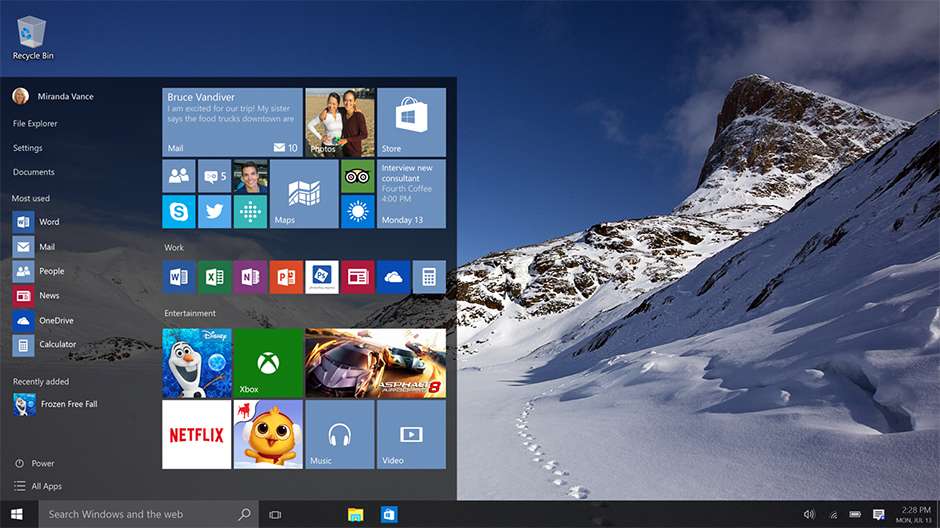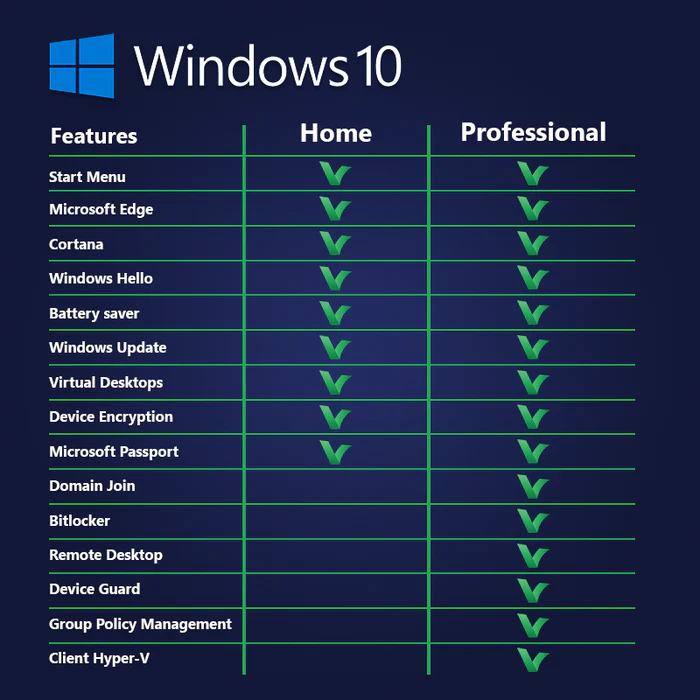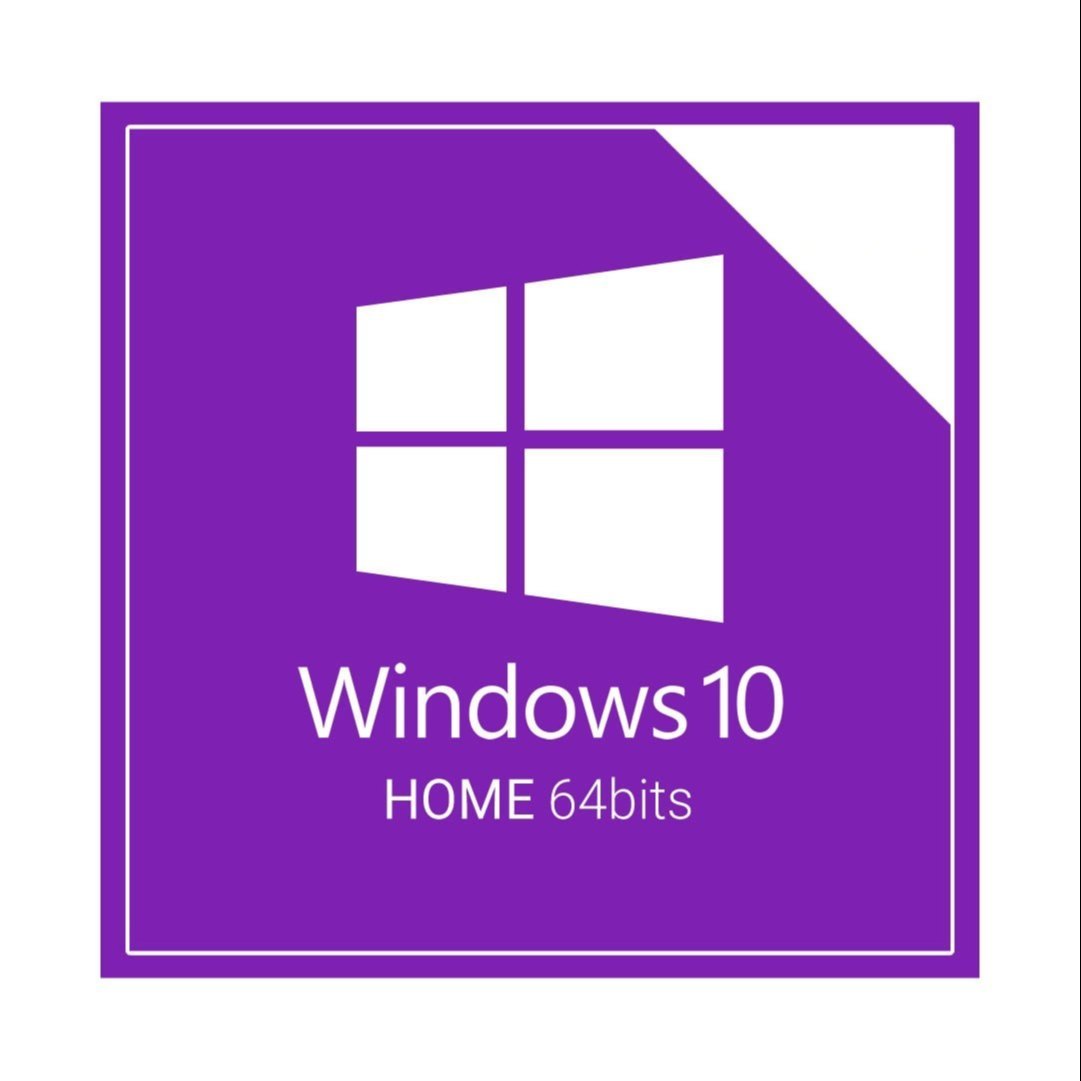Welcome to our comprehensive guide on Windows 10 Home, the latest operating system from Microsoft. Whether you’re a first-time user or looking to upgrade your old PC, this blog will provide you with all the information you need to navigate Windows 10 Home and take advantage of its features. From its announcement and release to its system requirements and market impact, as well as its built-in OS features such as Internet Information Server and Visual Studio, as well as the Phone Link experience for iOS users, we’ll delve into every aspect of this versatile operating system.
Exploring the Evolution of Windows 10 Home by Microsoft
Before we dive into the details, let’s take a moment to explore the evolution of Windows 10 Home. This operating system has come a long way since its initial release. With each new version, Microsoft has listened to user feedback, made improvements, and introduced cutting-edge features to enhance the user experience. Now, let’s delve into the specifics of Windows 10 Home and discover what sets it apart from previous versions of Windows.
The Announcement and Release
The announcement and release of Windows 10 Home marked a significant milestone in the world of operating systems. Microsoft strategically unveiled this operating system, generating excitement and anticipation among users worldwide. Whether you’re purchasing a new PC or upgrading for the first time, Windows 10 Home offers a range of features designed to improve functionality and productivity on both desktop and laptop devices.
First introduced in July 2015, Windows 10 Home made its debut in the United States and quickly expanded to other countries, including the United Kingdom. Its release in April of that year brought a wave of technological advancements, revolutionizing the digital landscape. Offering a seamless user experience, Windows 10 Home became a popular choice for home users, offering a vibrant start menu, enhanced desktop functionality, and the introduction of Microsoft Edge, the default web browser.
Marketing Strategies
Microsoft implemented a range of marketing strategies to promote Windows 10 Home and inspire users to upgrade. One of the key aspects of their strategy was leveraging the Microsoft Store, where users could access information about the operating system, download free Windows 10 upgrades, or take advantage of special upgrade offers. However, in September 2023, Microsoft closed the loophole that allowed users to upgrade from Windows 10 Home to Windows 10 Pro for free using an old product key, making it necessary for users to pay the upgrade fee or use the Microsoft media creation tool to create a bootable USB or ISO file for installation.
To generate buzz and drive adoption, Microsoft targeted specific demographics, such as students and gamers, tailoring ads and promotions to their interests. Additionally, Microsoft harnessed the power of social media and formed influencer partnerships to increase coverage and reach a wider audience.
One of Microsoft’s most successful marketing strategies was the offer of free upgrades to Windows 10 Home for users of previous versions of Windows. This enticing offer, available for a limited time, incentivized users to make the switch and experience the latest features and improvements.
Recognizing the importance of continuous improvement, Microsoft continually updates and enhances Windows 10 Home based on customer feedback and data. By actively engaging with users, Microsoft maintains a competitive edge while ensuring that their product remains relevant and in tune with evolving market needs.

Delving into the Features of Windows 10 Home
Now, let’s delve into the features of Windows 10 Home that make it a standout operating system. From its user interface to system security and command line capabilities, Windows 10 Home offers a robust set of features designed to enhance productivity, performance, and overall user experience. Let’s explore these features in more detail.
User Interface and Desktop Experience
The user interface and desktop experience in Windows 10 Home have been thoughtfully designed to provide a seamless and intuitive experience. Here are some key features of the user interface and desktop experience in Windows 10 Home:
- The Start menu is back, combining the best of Windows 7 and Windows 8. It offers a customizable layout, allowing users to pin their favorite apps and access them quickly.
- Live tiles on the Start menu provide real-time updates from apps, such as news headlines, weather updates, and calendar events, keeping you informed at a glance.
- Task View allows you to switch between virtual desktops, providing a more organized and efficient way to manage your open windows and apps.
- Cortana, Microsoft’s digital assistant, is integrated into Windows 10 Home, allowing you to use voice commands to search the web, set reminders, and perform various tasks without lifting a finger.
- The desktop experience in Windows 10 Home is highly customizable, with options to change themes, backgrounds, and colors to suit your personal preferences.
In addition to these features, Windows 10 Home introduces Microsoft Edge as the default web browser. With its improved performance, security, and features such as reading mode and annotation, Microsoft Edge offers a fast and intuitive browsing experience. Whether you’re casually browsing the web or conducting research, Microsoft Edge provides a seamless and user-friendly experience with its reception and personalization capabilities, making it a strong competitor to other browsers like Google. Additionally, Windows 10 Home also offers a wide range of apps from the Amazon Appstore, including ones originally designed for mobile devices, giving users more options and flexibility in their daily tasks.
System Security Enhancement
With the increasing need for robust security features, Windows 10 Home offers several enhancements to protect your system and data. Here are some key security features of Windows 10 Home:
- Windows 10 Home incorporates built-in security features, including Windows Defender antivirus, which helps protect your system from malware, viruses, and other security threats.
- Windows 10 Home leverages Trusted Platform Module (TPM) technology, which provides additional security measures by encrypting information and verifying system integrity.
- Continued updates and security patches are an integral part of Windows 10 Home’s lifecycle, ensuring that new security vulnerabilities are addressed promptly. Microsoft is committed to keeping your system secure through regular security updates, protecting you from emerging threats.
- To ensure the privacy of personal information, Windows 10 Home allows users to set their privacy preferences and control what information is shared with Microsoft and other apps. This level of customization gives users peace of mind regarding their personal data.
- For enhanced protection, Windows 10 Home offers features such as Windows Hello, which enables biometric login using technologies like facial recognition or fingerprint scanning. These advanced security features provide a convenient and secure way to access your devices without relying solely on passwords.
Command Line Capabilities
With Windows 10, you have access to Windows PowerShell, a robust command-line tool that empowers advanced users to perform a wide range of administrative tasks. The Command Prompt is a fundamental command-line tool that enables quick and efficient task execution, catering to both novice and experienced users. Additionally, Windows 10 supports Batch Files, which contain a series of commands for the command-line interpreter to execute, streamlining repetitive tasks. Furthermore, the Windows Subsystem for Linux (WSL) allows seamless execution of Linux commands directly on your Windows 10 machine, enhancing the platform’s versatility. Moreover, the Windows Remote Management (WinRM) protocol facilitates remote management of your Windows 10 machine using command-line tools, offering heightened convenience and efficiency in system administration.
Storage Requirements for Installation
When installing Windows 10 Home, it’s crucial to consider the minimum storage requirements to ensure smooth performance. Adequate storage not only allows for seamless installation but also supports future updates and additional features. It’s recommended to free up storage space before installation to prevent any potential issues. Moreover, if your existing storage is insufficient, you can easily expand it post-installation by adding an external hard drive or upgrading the internal storage. This flexibility ensures that you can optimize the performance of Windows 10 Home without constraints on storage capacity.

Editions, Pricing, and Updates
As the Windows 10 Home edition is designed for home users and is equipped with various features to meet their requirements, the pricing details are crucial for making an informed decision. Understanding the support lifecycle and regular feature updates is essential for ensuring the long-term usability of the operating system. Additionally, exploring the different editions available and any upgrade offers provides users with the flexibility to choose the best option according to their needs. Keeping track of the updates, especially the anniversary update, and knowing how they enhance the user experience is vital for maximizing the benefits of the operating system.
Overview of Windows 10 Home Edition
Windows 10 Home Edition is designed for home users and is packed with features catering to personal use. It includes the Windows Update feature for automatic updates, ensuring the latest security patches and features are installed. Users can create a Microsoft Account to access the Microsoft Store, enabling them to download various apps, games, and entertainment content, including the Xbox application. Additionally, the digital license and product key activation process allow for a seamless and hassle-free installation on a new PC or an upgrade from a previous version of Windows. The edition also offers enhanced security features, such as Windows Defender Antivirus and ongoing updates and protection. With speech recognition, users can interact with their device using their voice, creating a more personalized and efficient user experience. Windows 10 Home also offers the option of “S Mode”, an OEM option where users can restrict the installation of apps to only those from the Microsoft Store for added security and simplicity.
Pricing Details
Windows 10 Home presents an affordable price point tailored for personal use, offering a cost-effective structure catering to home users. Users can benefit from various deals and discounts, including discounted options on Amazon, elevating the overall value of the product. Microsoft consistently introduces promotional offers and competitive pricing options, enhancing the accessibility of this edition. This affordability makes Windows 10 Home a favorable choice for many users, aligning with their budget requirements.
Understanding the Support Lifecycle
Ensuring the longevity of your operating system involves a strategic support lifecycle plan. Windows 10 Home prioritizes long-term support, promising continuous security updates and fixes for an extended period. Microsoft’s commitment to ongoing maintenance and user assistance is evident in the carefully designed support model, which addresses evolving security threats and user requirements. This dedication underscores Microsoft’s pledge to provide regular updates and reliable support for the latest version of Windows 10 Home. By emphasizing an extensive support lifecycle, Microsoft demonstrates its unwavering dedication to user satisfaction and security.
Regular Feature Updates
Consistently delivering periodic feature updates, Windows 10 Home continually enhances functionality and user experience. This approach ensures a modern and dynamic operating system, reflecting Microsoft’s commitment to innovation. Users can expect a continuous stream of new functionalities and improvements, contributing to the relevance and adaptability of Windows 10 Home. The product’s regular feature updates, requiring internet access, align with the ever-evolving tech landscape, reinforcing its position as a forward-looking operating system. Embracing this strategy, Microsoft reinforces the adaptability of Windows 10 Home, catering to the evolving needs of users in the digital age.
How is Windows 10 Home different from other versions of Windows 10?
Windows 10 Home is designed for home users and offers essential features like the Start Menu, Microsoft Edge browser, and Cortana virtual assistant. It lacks some enterprise-focused features found in Windows 10 Pro, such as remote desktop access and BitLocker encryption.
System Prerequisites for Windows 10 Home
Windows 10 Home has specific system prerequisites that must be met for smooth operations. The physical memory limits should ideally be 1GB for 32-bit or 2GB for 64-bit. The processor requirements for Windows 10 Home include a minimum of 1 GHz clock speed and support for PAE, NX, and SSE2. Graphics card compatibility is essential for DirectX 9 or later with WDDM 1.0 driver. These prerequisites are crucial for optimal performance and to leverage the advanced features offered by Windows 10 Home. Meeting these requirements, including at least 4GB of RAM, ensures a seamless user experience and allows for the efficient utilization of the operating system’s capabilities, making it a significant upgrade from previous versions such as Windows 7 and Windows Vista.
Physical Memory Limits
Optimizing system resources and stability, Windows 10 Home enforces specific physical memory limits. This approach to memory management ensures reliable and efficient operation, facilitating smooth multitasking and performance for users. Microsoft’s deliberate consideration of these memory limits highlights a focus on system optimization and adherence to industry standards and best practices. The allocation of physical memory by Windows 10 Home aligns with the product’s commitment to promoting a seamless user experience.
Processor Requirements
With Windows 10 Home, the processor requirements play a crucial role in ensuring optimal performance and compatibility across various devices, including tablets. Tailored to leverage modern computing capabilities, these specifications allow users to capitalize on enhanced speed and responsiveness. Microsoft’s emphasis on advanced hardware standards, such as tablets, is reflected in the product’s processor requirements, contributing to a seamless and efficient computing experience. The alignment with cutting-edge technologies underscores the commitment to delivering a superior user experience.
Graphics Card Compatibility
Windows 10 Home offers extensive support for a wide range of graphics cards, providing users with immersive visuals and the ability to run graphic-intensive applications seamlessly. The product’s compatibility with diverse graphics cards significantly enhances the user experience, especially for gaming and multimedia content, by enabling enhanced display quality and performance. Microsoft has meticulously ensured comprehensive graphics card support to cater to various user preferences and requirements, including compatibility with the popular Movies & TV application, reflecting the product’s commitment to visual excellence. Leveraging Windows 10 Home’s graphics card compatibility and access to the Movies & TV application opens up new possibilities for users to enjoy high-quality graphics and smooth performance, making it an ideal choice for those who prioritize visual aesthetics and seamless graphical experiences.
Reception and Market Share of Windows 10 Home
Windows 10 Home has solidified its position as a leading operating system, enjoying widespread acclaim and substantial market share. This reflects its popularity and significance among home users and enthusiasts who value its user-friendly interface, robust features, and reliable performance. Microsoft’s strategic positioning and promotion have undeniably contributed to the remarkable market share of Windows 10 Home, highlighting its influential presence in the consumer software landscape. The reception and market share of Windows 10 Home underscore its impact on the industry, making it a preferred choice for users seeking a seamless and efficient operating system.
How has Windows 10 Home Impacted the Market?
Windows 10 Home has had a significant impact on the market, shaping user expectations and industry standards. Its ability to drive technological innovation and user engagement has redefined the dynamics of consumer-oriented operating systems. Microsoft’s vision for Windows 10 Home has set new benchmarks for home computing, revolutionizing the market and shaping the digital experiences of home users.

Conclusion
To sum up, Windows 10 Home offers a user-friendly interface and a range of features that enhance both productivity and security. With regular updates and support, it ensures that users have access to the latest advancements in technology. The system requirements are reasonable, making it accessible to a wide range of users. Since its release, Windows 10 Home has gained significant market share and has made a positive impact on the industry. Whether you’re a casual user or a tech enthusiast, Windows 10 Home is a reliable and efficient operating system that meets the needs of modern computing.










